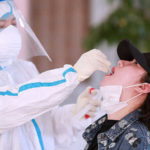The COVID-19 testing process involves various types of samples, including nasal and throat swabs, saliva collection, or blood samples. The most common method is the nasal swab, also known as the nasopharyngeal swab.
Below, we share some insights and important considerations for the COVID-19 testing process using the nasal swab method.
1 Nasal Swab Collection Procedure
Proper sample collection is extremely important. Even minor errors in the nasal swab collection procedure can lead to false-negative test results.
During the nasal swab collection, the individual being tested will sit on a chair and tilt their head slightly backward. The healthcare worker performing the collection will stand at a slight angle to avoid being coughed on.
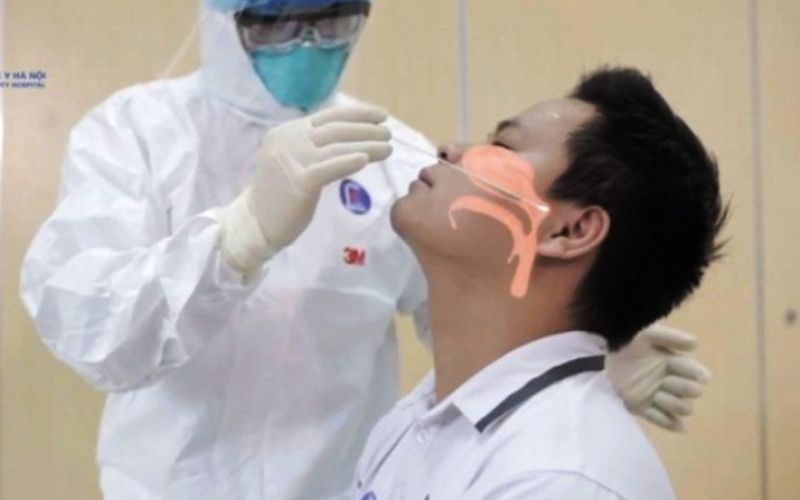 The swab will be inserted approximately 2-3 inches into the nostril to reach the nasopharyngeal area.
The swab will be inserted approximately 2-3 inches into the nostril to reach the nasopharyngeal area.
The healthcare worker will use a flexible plastic-shafted swab, employing a technique to insert the swab approximately 2-3 inches into the nostril to reach the nasopharyngeal area. Then, the swab will be slowly removed from the nasopharyngeal area, right next to the uvula, once the sample has been collected.
And just like that, you’ve completed your important task! This process is quick, typically taking just a few seconds. After the sample collection procedure, the samples will be sent to the city’s Disease Control Center for testing.
Reference:
2 Is the Nasal Swab Test Painful, and How Can Discomfort Be Minimized?
Our advice is to maintain a calm and relaxed mindset. You will be guided by healthcare workers to tilt your head slightly backward to facilitate the sample collection process.
The nasal swab collection for COVID-19 testing can be a bit uncomfortable as the swab needs to be inserted deep into the nostril to reach the nasopharyngeal area. Simply touching the front of the nose is not sufficient for an accurate test result.
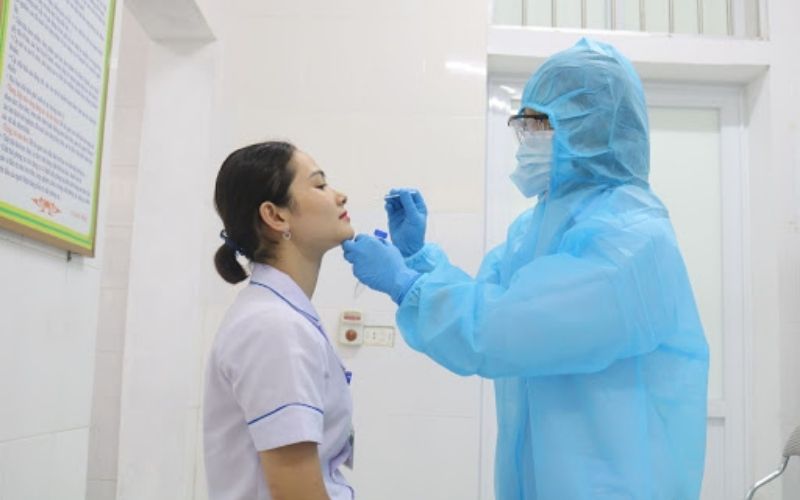 During the collection process, it’s important to stay calm and, most importantly, relax and don’t tense up!
During the collection process, it’s important to stay calm and, most importantly, relax and don’t tense up!
This may cause an itchy sensation in the nose and throat, watery eyes, and a nauseous feeling. Some collectors may be gentler, while others may be a bit firmer. However, what’s important is that you relax your body and refrain from tensing up. Doing so will only make the collection process more difficult, and you may even injure your nasal cavity or start nosebleeds, prolonging the process for both yourself and the collector.
If you follow the instructions, the swab test will only take a few seconds. So, relax and let your body be at ease to speed up the process.
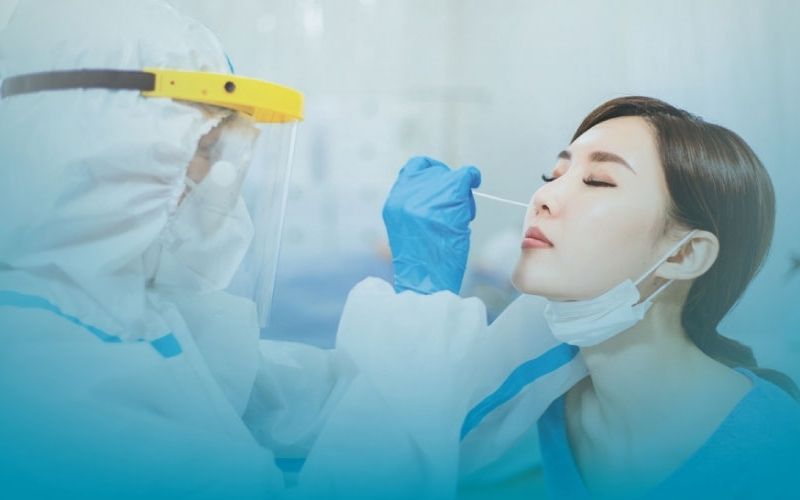 The swab collection process only takes a few seconds, so rest assured!
The swab collection process only takes a few seconds, so rest assured!
3 How to Self-Administer a Rapid COVID-19 Test
First, you will need a COVID-19 rapid test kit. Take the tray out of the package and use it as soon as possible, preferably within an hour. Then, place the tray on a clean, flat surface, and remove the sterile swab from its package.
Tilt your head back at about a 70-degree angle, and then insert the swab into your nostril and push it gently but firmly upward until you meet resistance. Next, rotate the swab three times and hold it in place for 5-10 seconds before slowly removing it.
Dip the swab into the tube and twist it, rubbing the swab against the tube’s walls and bottom about ten times. Let the tip of the swab soak in the solution for about a minute, and then squeeze the tube’s walls against the swab.
After that, tightly close the tube, and shake it vigorously. Drop three drops (approximately 10 microliters) of the extracted sample from the tube into the sample well (S) of the test tray, and start timing.
For further information:
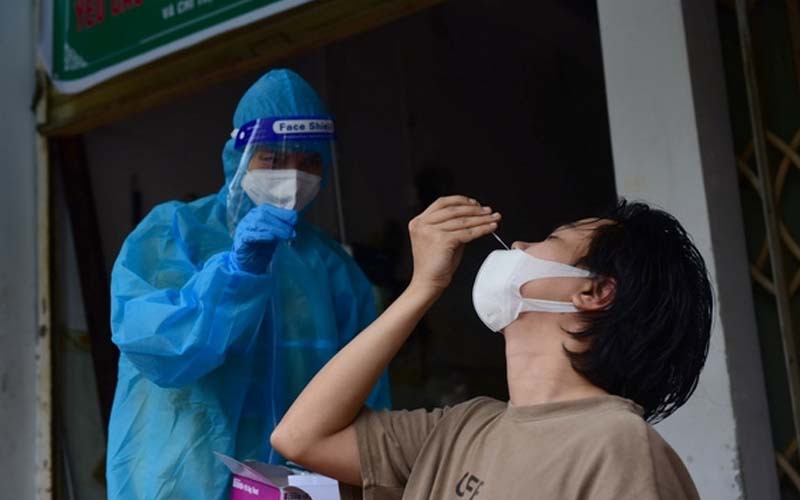 How to Self-Administer a Rapid COVID-19 Test
How to Self-Administer a Rapid COVID-19 Test
Reference:
We hope that the information provided above about the COVID-19 testing process will help ease your concerns and prepare you mentally for the procedure.
COVID-19 Testing Covered by Insurance: Who is Eligible for Financial Assistance?
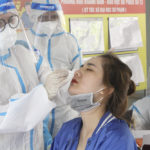 Testing Covered by Insurance: Who is Eligible for Financial Assistance?’>
Testing Covered by Insurance: Who is Eligible for Financial Assistance?’>The Ministry of Health has released new regulations regarding the payment of COVID-19 tests, including sample collection and test result analysis, at medical facilities. Are these tests covered by health insurance? Read on to find out more.
Coronavirus Testing: Where, How Much and How Long?
The COVID-19 pandemic has been a challenging time for all, and testing is a crucial step in identifying and containing the spread of the virus. As we navigate these uncertain times, it is essential to know where and how to get tested. Join us as we explore the world of COVID-19 testing, uncovering the locations and costs involved in staying safe and healthy.


























